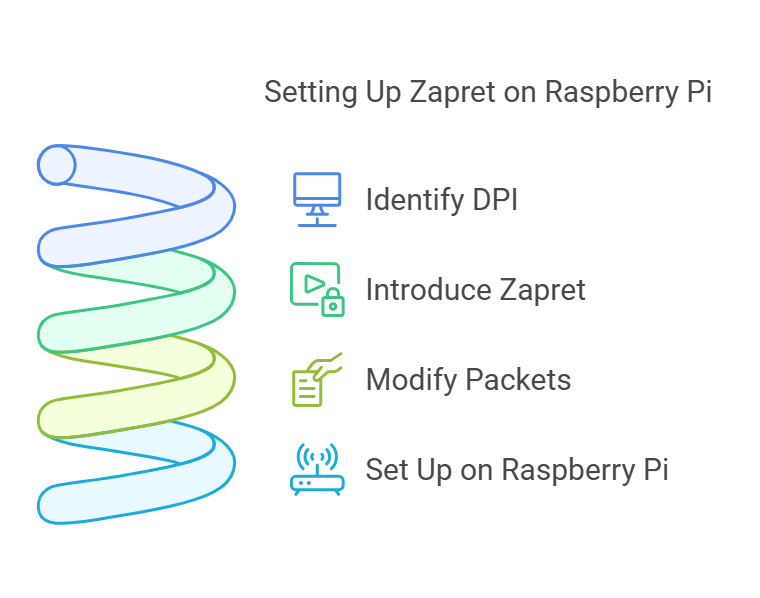Setting Up Zapret on Raspberry Pi: A Guide to Bypassing DPI Censorship
Learn how to set up Zapret on a Raspberry Pi to bypass Deep Packet Inspection (DPI) and access unrestricted internet content. This guide covers installation, configuration, and key features of Zapret, an open-source tool for enhancing online privacy.
Effortless Zapret Setup on Raspberry Pi: A Complete Guide to Bypassing DPI Censorship 5
Zapret is an open-source tool designed to bypass Deep Packet Inspection (DPI) mechanisms that restrict internet access. Developed by the GitHub user ‘bol-van’, it offers a multi-platform solution to counteract censorship and enhance online privacy. When deployed on a Raspberry Pi, Zapret can serve as a powerful gateway to circumvent network restrictions.
Understanding Deep Packet Inspection (DPI)
DPI is a sophisticated method used by Internet Service Providers (ISPs) and governments to monitor and control internet traffic. By analyzing data packets in real-time, DPI can block access to specific websites, throttle connection speeds, or censor content deemed inappropriate. While intended for network management and security, DPI often raises concerns regarding privacy and freedom of information.
Zapret: A Solution to Bypass DPI
Zapret functions by modifying data packets to evade detection by DPI systems. It employs techniques such as packet fragmentation and protocol obfuscation, making it challenging for DPI mechanisms to identify and block specific traffic. This approach enables users to access restricted content without alerting censorship tools.
Setting Up Zapret on Raspberry Pi
Deploying Zapret on a Raspberry Pi transforms it into a versatile tool for bypassing network restrictions. Here’s how to get started:
- Prerequisites:
- A Raspberry Pi with a compatible Linux distribution installed.
- Internet connectivity.
- Basic knowledge of command-line operations.
- Installation Steps:
- Update the System: Ensure your Raspberry Pi’s package list is current.
sudo apt update && sudo apt upgrade
Install Dependencies: Zapret requires specific libraries and tools.

